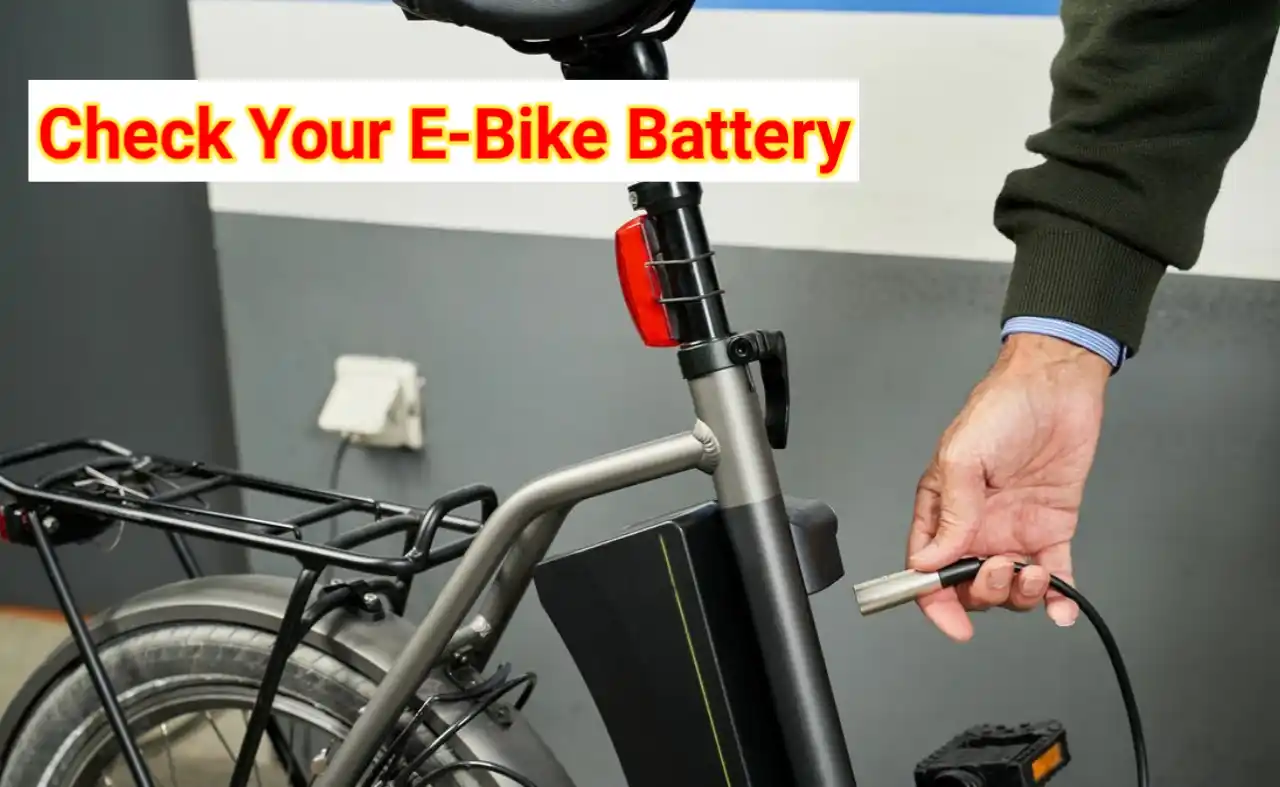Check Your E-Bike Battery
Check Your e-bike battery is the lifeblood of your machine, powering your adventures and keeping you rolling. But just like any other element, it needs a little TLC to stay in top shape. Regularly check your e-bike battery health ensures optimal performance, prevents unanticipated power outages, and extends its lifetime. Read: E-Bike battery voltage
Table of Contents
In this comprehensive companion, we’ll claw into the nitty- gritty of e-bike battery checks, covering:

- Visual examination: The first line of defense.
- Voltage dimension: Gauging the battery’s power.
- Current Draw: Assessing energy consumption.
- Capacity Test:Determining remaining juice.
- Advanced Diagnostics: Taking a deeper look( voluntary).
- Tips for Optimal Battery Health: Keep your battery happy.
- FAQs: Your battery questions answered.
Let’s get started!
1. Visual examination
Before diving into oddities, give your battery a good once- over. Look for any physical damage like dents, cracks, or leaks. Check for erosion around the outstations and ensure all connections are secure.
2. Voltage dimension
This introductory test gives you a quick shot of your battery’s health. You will need a multimeter, a readily available and affordable tool. With the battery completely charged, set the multimeter to DC voltage mode and touch the examinations to the positive and negative outputs( red to positive, black to negative). The reading should match the battery’s nominal voltage( generally around 36V, 48V, or 52V). A significant divagation indicates implicit issues. Read:Electric bike on a Plane
3. Current Draw
This test goes beyond just voltage, measuring the factual current flowing through the battery while the motor is running. A advanced- than- anticipated current draw could gesture hamstrung operation or internal problems. Consult your e-bike primer for the respectable current range for your specific model.
4. Capacity Test
This further involved test determines the remaining charge in your battery. Specialized tools like battery testers or smartphone apps can perform this function. Simply follow the device’s instructions to get an accurate reading of your battery’s capacity as a chance of its full charge.
5. Advanced Diagnostics
For a deeper dive, some e-bike batteries are erected- in individual tools or can be connected to devoted software. These can reveal detailed information about cell voltages, temperatures, and charge cycles, helping identify implicit issues beforehand.
Tips for Optimal Battery Health
- Avoid extreme temperatures: Store your battery in a cool, dry place and avoid exposing it to direct sun or freezing temperatures.
- Charge it right:Use the original bowl and follow the recommended charging guidelines. Avoid deep discharges and top- ups whenever possible.
- Regularly exercise your battery:Do not let it sit idle for extended ages. Take your e-bike for a spin every many weeks, indeed if it’s just for a short lift.
- Keep it clean and dry: Wipe down your battery with a damp cloth to remove dirt and debris.
Final Thought
Checking your e-bike battery regularly is a simple yet pivotal step in maintaining your safe horse. By following these tips and performing the checks outlined over, you can ensure your battery delivers optimal performance and powers your adventures for numerous long hauls to come. Flash back, a healthy battery is a happy battery, and a happy battery means further grand lifts! Read:Benefits of Electric Bikes
FAQs
Q How frequently should I check my e-bike battery?
It’s good practice to visually check your battery before every lift. For further in- depth checks like voltage dimension, end for formerly a month or after long lifts.
Q What should I do if my battery fails a test?
If any of the tests indicate a problem, consult your e-bike primer or communicate with the manufacturer or a good bike handyperson for further opinion and implicit form or relief.
Q Can I replace my e-bike battery myself?
While some batteries are designed for stoner relief, it’s generally recommended to seek professional help to ensure proper installation and safety.
Q How can I dispose of my olde-bike battery responsibly?
E-bike batteries contain dangerous accouterments and should Norway be thrown in the trash. Look for authorized battery recycling centers in your area to dispose of them responsibly.
By following these tips and staying informed, you can keep your e-bike battery in top shape and enjoy continued lifts for times to come. Flash back, a little preventative care goes a long way in maximizing your e-bike’s implicitness and icing you are always ready to roll!
